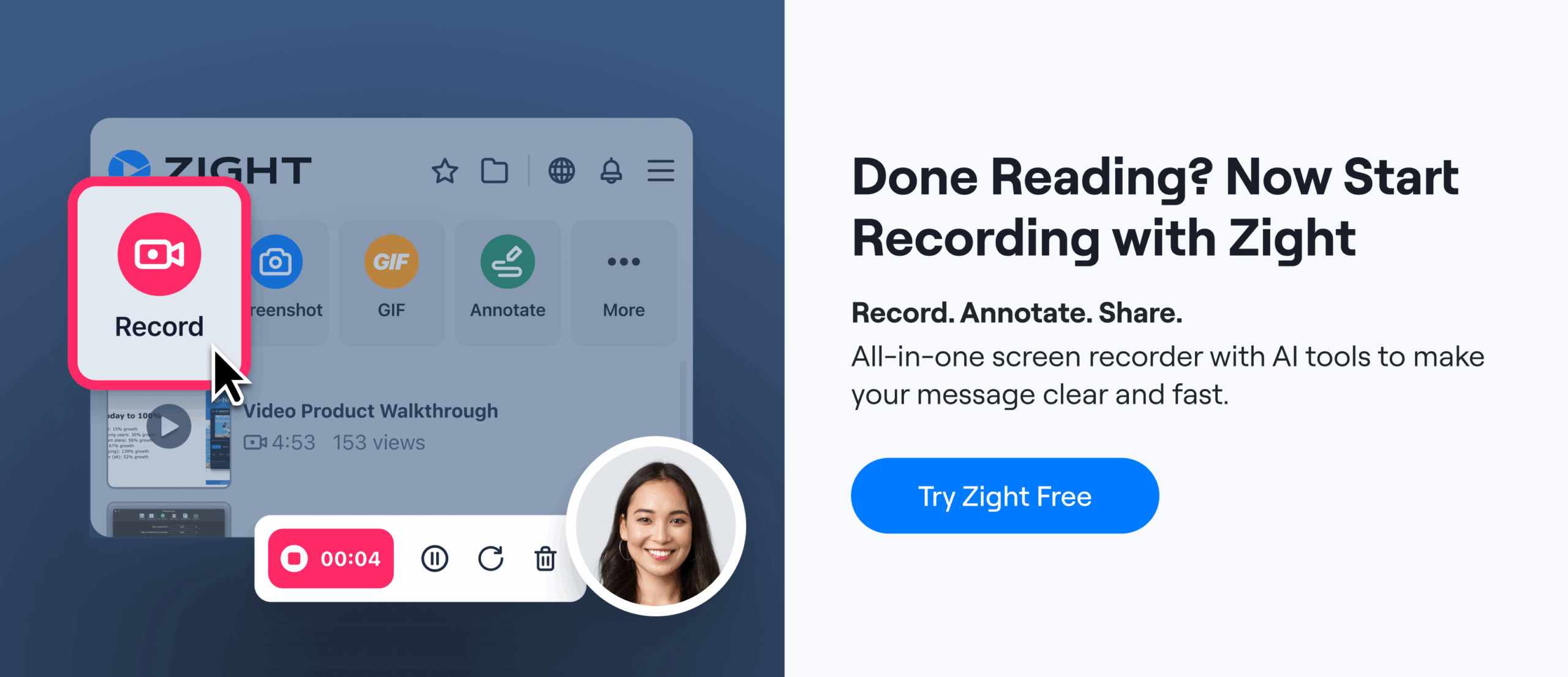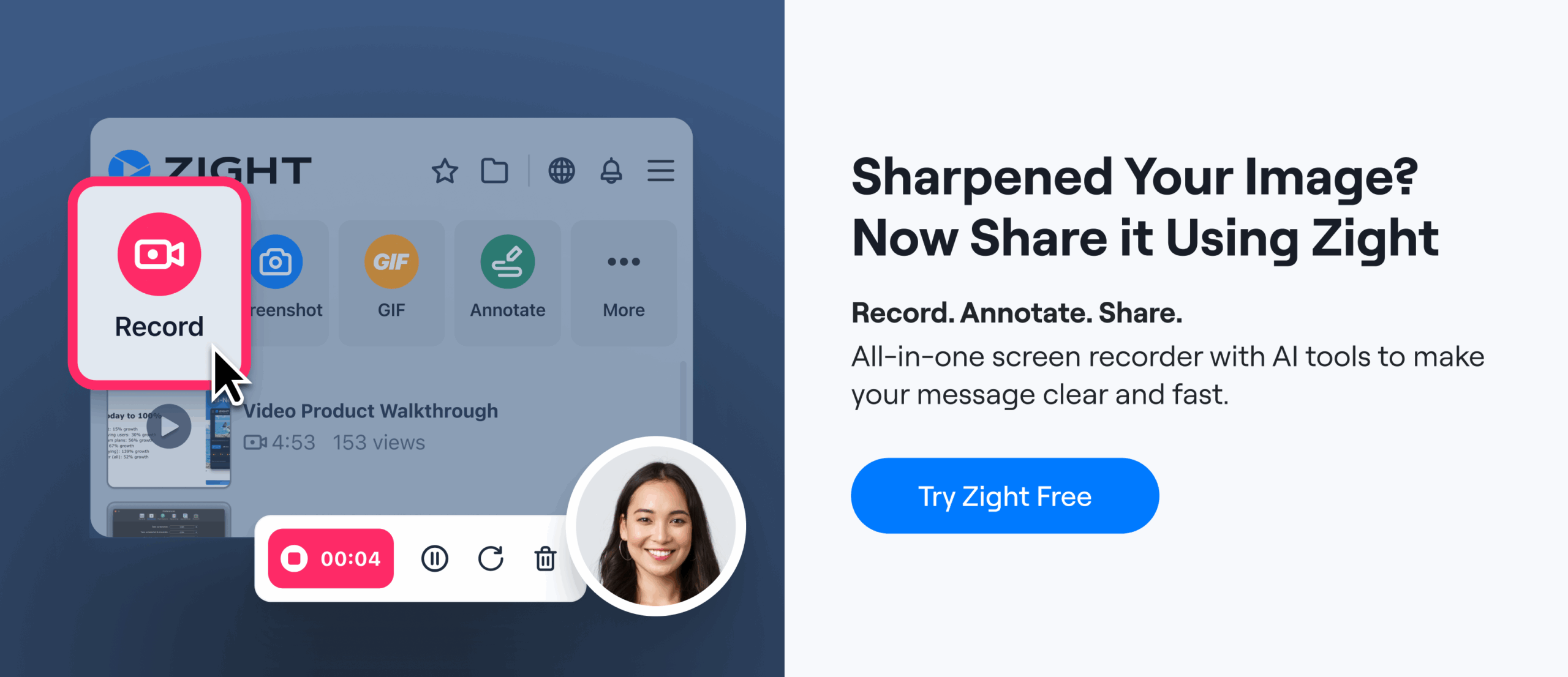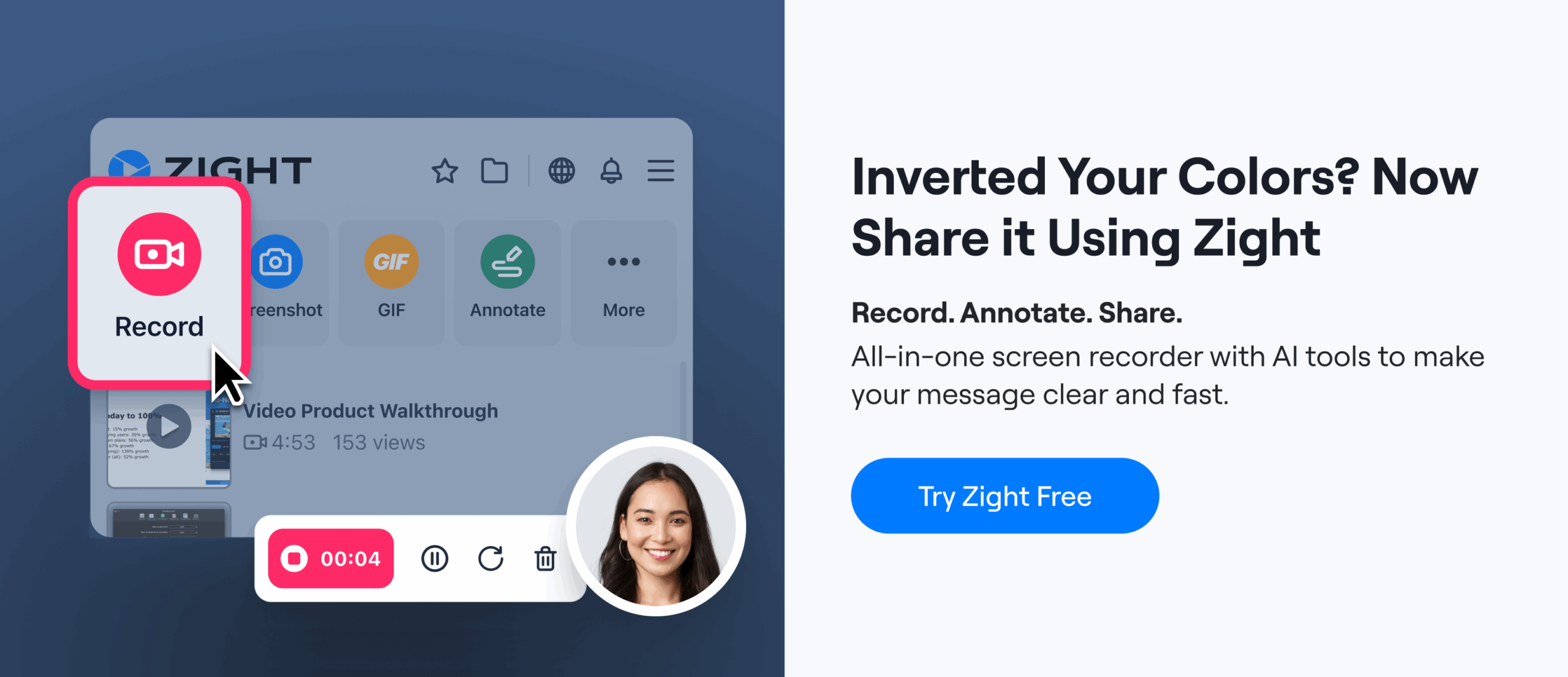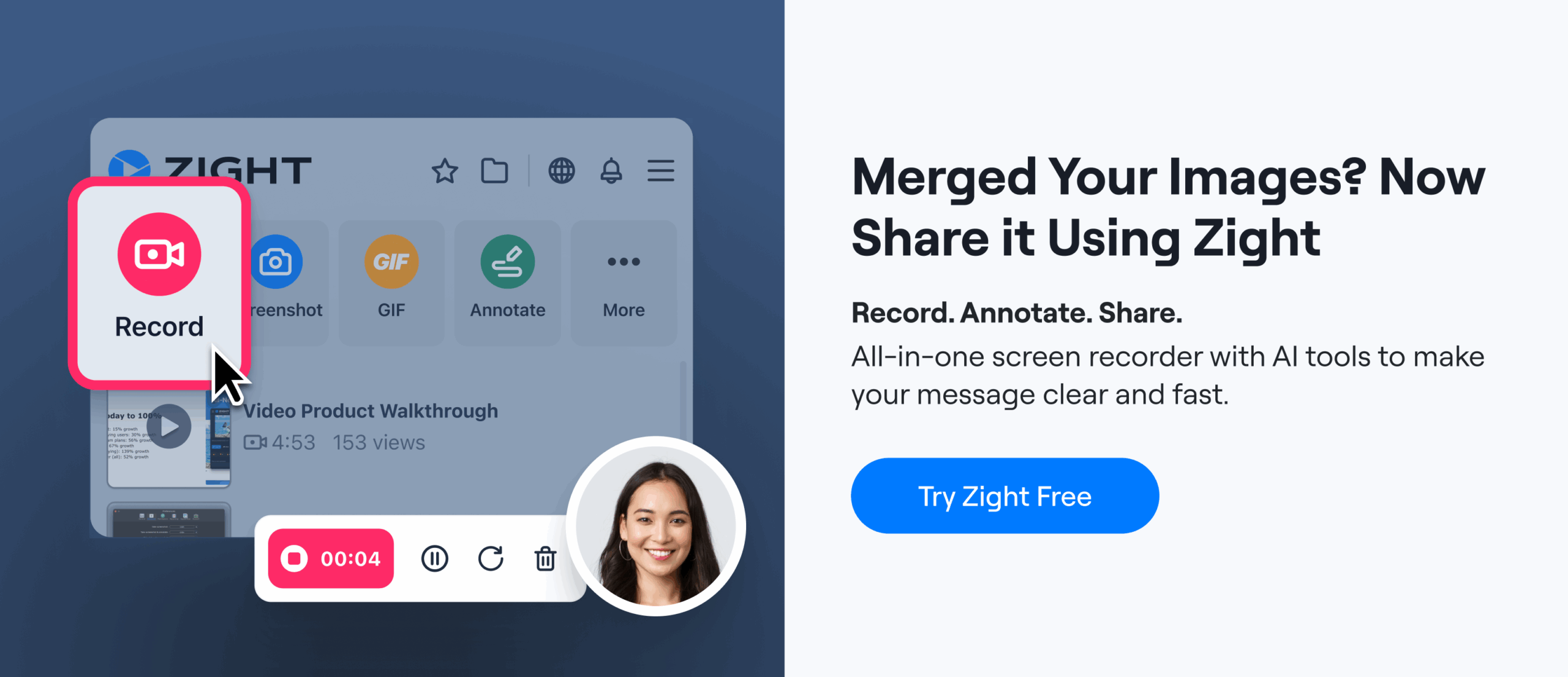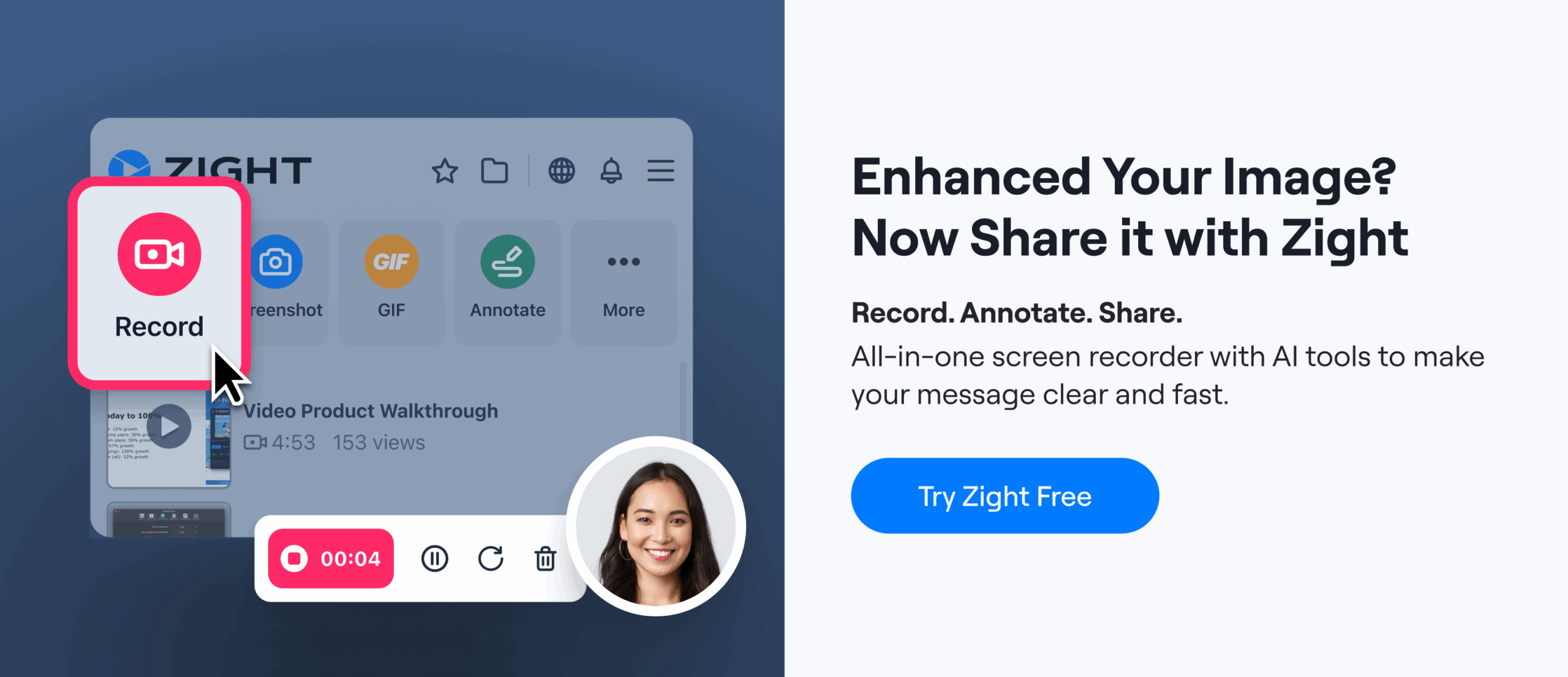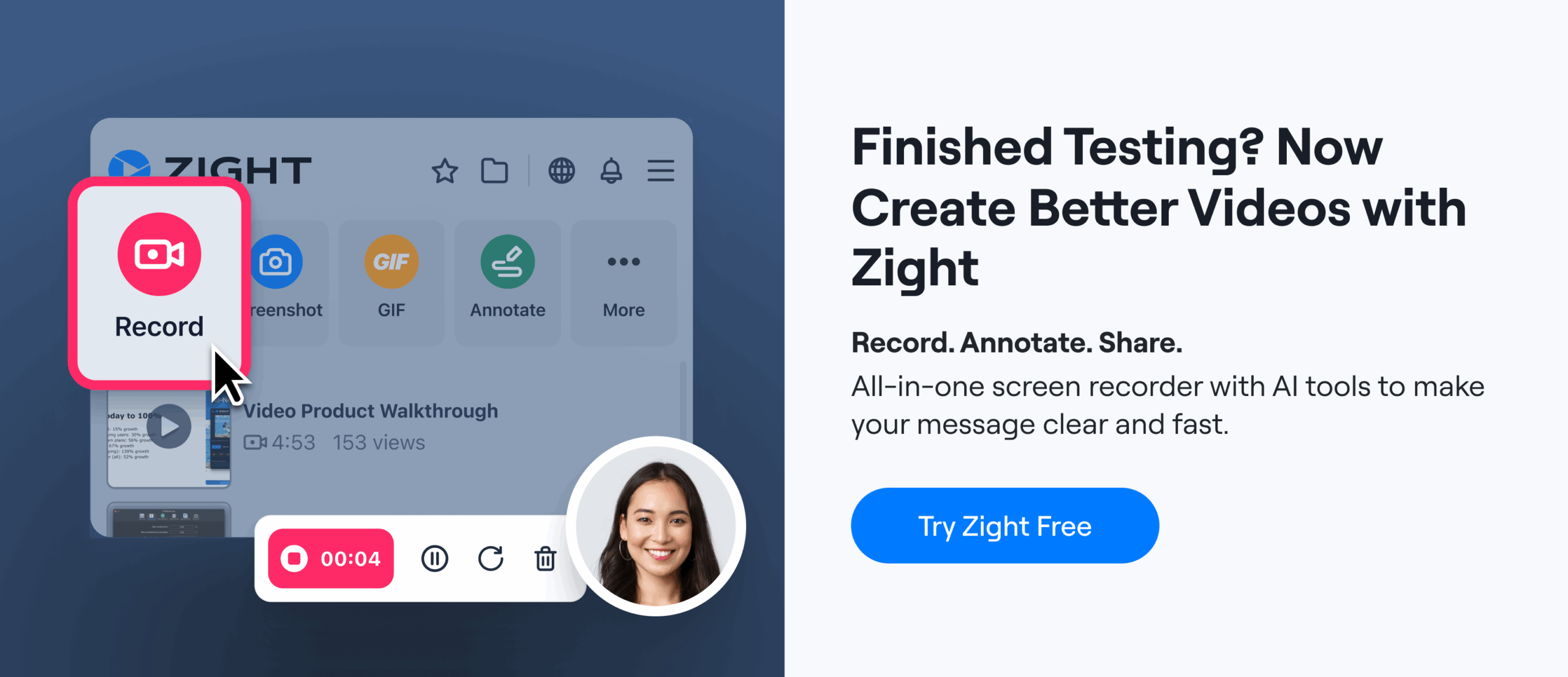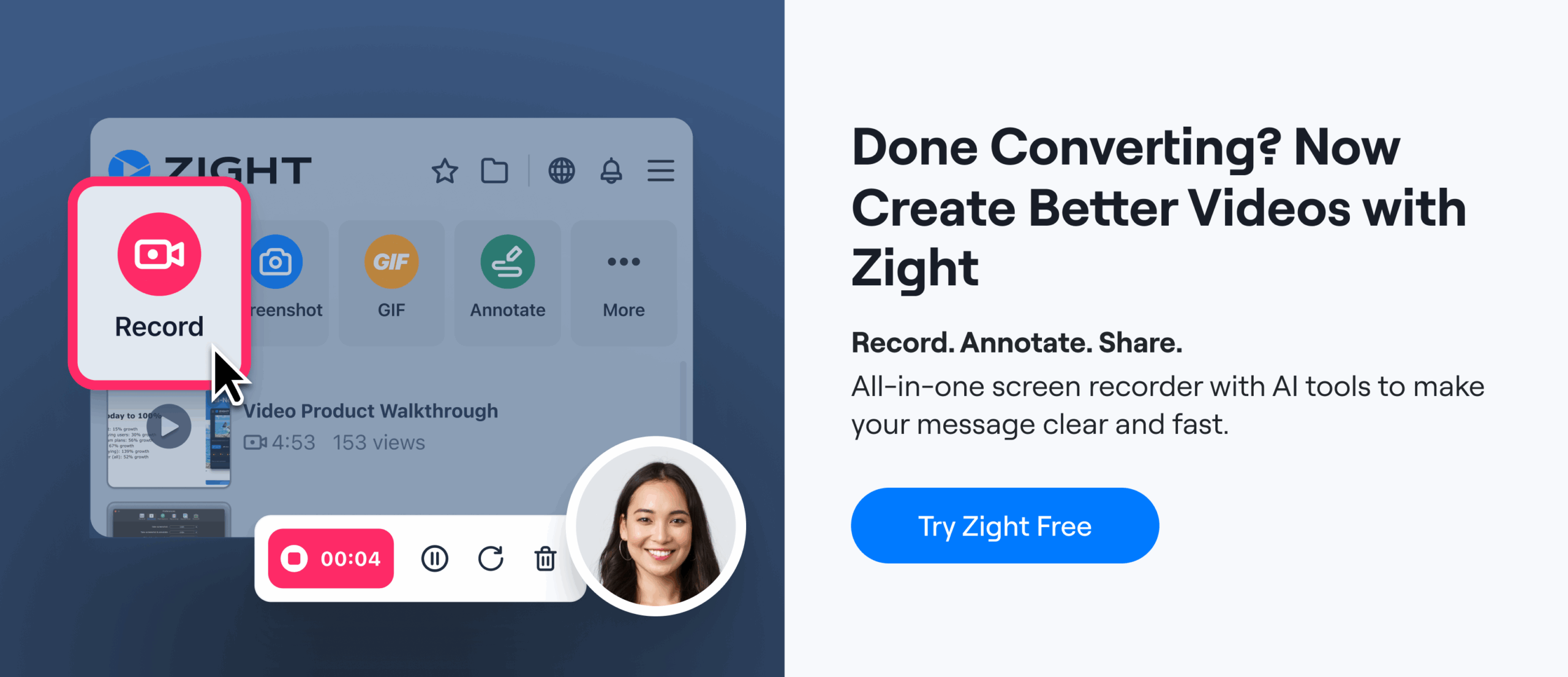Let’s say you’re the manager of a mid-sized tech company in a highly competitive and dynamic industry. To stay competitive, your team must keep up with the latest trends and continuously innovate. This is where the importance of continuous learning and development comes into play.
By prioritizing continuous professional development for employees, you can ensure your team remains agile, knowledgeable, and highly productive, ultimately driving your company’s success. So, how do you create employee development programs?
We will discuss the why and how and share our best strategies – including how you can use visuals through Zight’s screen recorder, screenshot app, GIF maker, and more to communicate better.
The Importance of Continuous Learning and Development

An employee training program is important for your teams. These are some of the benefits of continuous learning:
1. Enhancing Employee Skills
Continuous learning and development are crucial for enhancing employee skills.
When employees participate in ongoing training programs, they can acquire new competencies that keep them relevant in their roles. This not only boosts their confidence but also improves their ability to perform tasks efficiently.
Moreover, skills development through continuous education allows employees to tackle complex problems with greater ease. This adaptability leads to increased productivity, as employees can navigate new technologies and methodologies effectively.
2. Fostering Employee Engagement
When employees see that their growth and development are valued, they are more likely to feel motivated and engaged in their work. A learning culture promotes a sense of belonging and purpose, making employees feel like integral parts of the organization.
Engaged employees are not only more productive but also more likely to stay with the company for the long term. This reduces turnover rates and the associated costs of recruiting and training new staff.
3. Driving Innovation
When employees are encouraged to learn and develop, they bring fresh ideas and perspectives to the table. This can lead to the creation of new products, services, or processes that enhance efficiency and effectiveness.
A commitment to continuous education also empowers employees to experiment and take calculated risks, knowing they have the knowledge and support to back them up. As employees learn and grow within their line of work, they can highlight their skills by using resume templates available online. This will encourage internal promotions and reduce employee turnover. This innovative mindset can propel your organization forward, keeping you ahead of competitors and ensuring long-term success.
4. Ensuring Adaptability
Ongoing learning and development equip employees with the skills needed to navigate these changes seamlessly.
When your team is trained to handle new challenges and technologies, they can quickly adapt to shifts in the market or industry. This prevents disruptions in productivity and positions your organization to capitalize on new opportunities.
By fostering a culture of continuous professional development, you can ensure your workforce remains resilient and ready to tackle whatever comes their way.
5. Improving Quality of Work
As employees enhance their skills and knowledge, they become more proficient in their roles. This leads to higher-quality outputs, as employees can complete tasks with greater accuracy and efficiency.
Investing in employee development also promotes a culture of excellence. When continuous improvement is a core value, employees strive to perform at their best, leading to overall productivity improvement. By prioritizing on the job training, you can ensure that the quality of work remains high.
Strategies to Boost Learning and Development in the Workplace

Continous learning is imperative for a productive, effective, and motivated workforce. Here’s how to craft and utilize training and development opportunities for your team today!
1. Implementing Structured Training Programs
One of the most effective strategies to promote continuous learning in the workplace is to implement structured training programs. These programs can be tailored to address specific skills gaps and development needs within your team. By providing regular, targeted training sessions, you can ensure that employees are continually upgrading their skills and knowledge.
Structured training programs can include workshops, seminars, and online courses, each designed to offer practical and relevant content that employees can immediately apply to their roles.
Structured training programs also offer a clear path for employee growth, helping them understand the opportunities available for advancement within the organization. This boosts employee engagement and enhances productivity, as employees are more motivated to apply their new skills and knowledge in their roles.
Additionally, tracking and evaluating the progress of these programs allows you to measure their effectiveness and make necessary adjustments to meet evolving needs.
2. Leveraging Technology for Learning
Incorporating technology into your learning and development initiatives can significantly enhance their effectiveness. Tools such as online courses, webinars, and learning management systems (LMS) provide flexible and accessible learning opportunities for employees. This allows them to engage in continuous education at their own pace and convenience.
By using these platforms, you can offer a wide range of courses and resources that employees can access from anywhere, making it easier for them to fit learning into their busy schedules.
Platforms like Zight, which offer features such as screen recording and video editing, can be invaluable for creating engaging training content. These tools enable you to develop interactive tutorials and how-to videos that can simplify complex topics.
You should use such visual communication software to ensure that learning is both interactive and impactful, leading to better retention of information and application of skills in the workplace.
3. Encouraging Mentorship and Peer Learning
Mentorship and peer learning are powerful strategies for promoting continuous professional development.
You can pair employees with experienced mentors to facilitate the transfer of knowledge and skills within the organization. Mentors can provide guidance, support, and feedback, helping mentees navigate their career paths and overcome challenges. Regular mentorship meetings can create a supportive environment where employees feel comfortable discussing their goals and seeking advice.
Peer learning, where employees share their knowledge and expertise with each other, also fosters a collaborative learning culture. This can be facilitated through regular team meetings, workshops, and collaborative projects. Peer learning enhances skills development nad strengthens team cohesion and communication.
Encouraging mentorship and peer learning can create a supportive environment where continuous learning is embedded in the everyday work experience, making it a natural part of your organizational culture.
4. Providing Learning Incentives
You can also offer incentives for continuous learning to motivate employees to actively participate in development programs.
These incentives can take various forms, such as recognition, rewards, or opportunities for career advancement. For example, you can introduce a points system where employees earn points for completing courses or attending workshops – they can redeem the points for rewards such as bonuses, extra vacation days, or professional development opportunities.
By acknowledging and rewarding employees’ efforts to enhance their skills, you can reinforce the importance of continuous professional development. Incentives also create a positive feedback loop, where employees feel valued and are encouraged to invest further in their learning. This leads to sustained engagement and productivity improvement, as employees are more likely to apply their new skills and knowledge in their roles.
Pro Tip: Regularly update and communicate these incentives ensures that employees remain motivated.
5. Promoting a Learning Culture
Create a continuous learning culture within your organization. A learning culture emphasizes the importance of knowledge sharing, continuous improvement, and personal growth. Leaders play a crucial role in fostering this culture by setting an example and actively supporting employee development. This can be achieved through regular communication about the importance of learning, as well as by participating in training sessions themselves.
Promoting a learning culture includes encouraging open communication, providing resources for learning, and celebrating achievements. For example, you can create a learning library with books, articles, and online courses that employees can access.
You can also recognize and celebrate employee learning achievements – consider sharing success stories in company newsletters or during team meetings to reinforce the value of continuous education.
6. Utilizing Feedback for Improvement
Regular feedback is vital for continuous learning and development. By providing constructive feedback, you can help employees identify areas for improvement and set goals for their professional growth. Feedback should be specific, actionable, and delivered in a supportive manner to encourage positive change. This involves not only highlighting areas that need improvement but also recognizing strengths and achievements.
In addition to giving feedback, it’s important to create opportunities for employees to share their insights. This two-way feedback loop fosters a culture of continuous engagement. For example, conducting regular surveys or holding feedback sessions can provide valuable insights into the effectiveness of your learning and development programs.
When you utilize feedback effectively, you can ensure that learning and development initiatives are aligned with the needs of your employees and organization, making adjustments as necessary to keep them impactful.
7. Encouraging Cross-Functional Training
Cross-functional training involves educating employees about different roles and functions within the organization. This type of training can help employees understand the broader context of their work, improve collaboration, and increase overall productivity. By exposing employees to various departments and functions, you can foster a more versatile and resilient workforce.
Cross-functional training can be implemented through job rotations, shadowing opportunities, and cross-departmental projects. These experiences enable employees to gain new perspectives, develop a broader skill set, and build stronger relationships with colleagues across the organization. Encouraging cross-functional training not only enhances individual capabilities but also promotes a more integrated and cohesive workplace.
Wrapping Up
Continuous learning and development are fundamental to boosting employee productivity and ensuring the long-term success of your organization. So, implement strategies such as structured training programs, encourage mentorship, and utilize feedback to ignificantly enhance learning and development in the workplace. Embrace the importance of continuous education, and watch your organization thrive.
Not sure where yo start? You only need the best tools to create training materials, improve team communication, and measure the effectiveness of your workplace learning efforts. Zight is the best tool for all strategies!
Download it for Windows or Mac today and record your screen or GIF videos to train your employees. You can also annotate the videos, screenshots, and GIFs to ensure employees can follow every instruction. In addition, seamlessly share this training material and have your employees leave feedback online to measure effectiveness!



